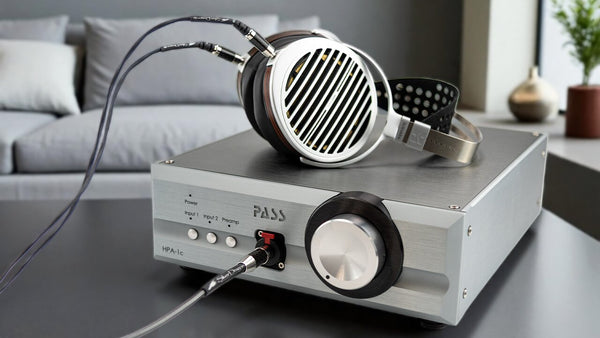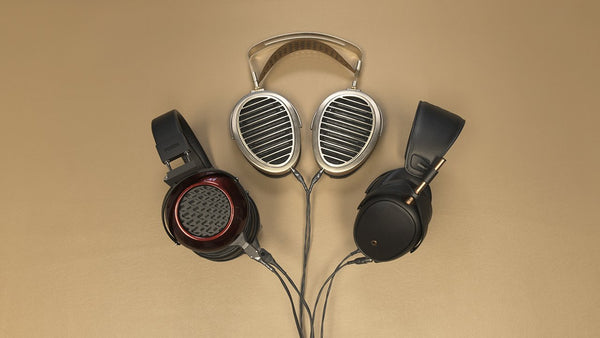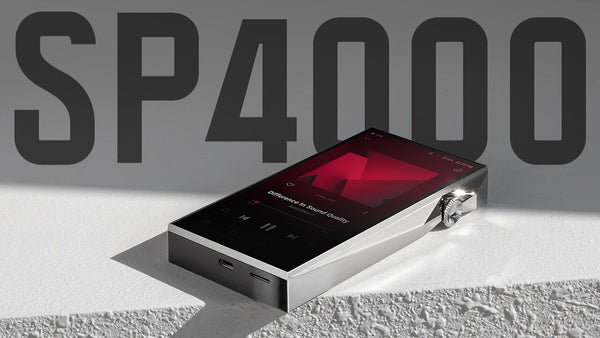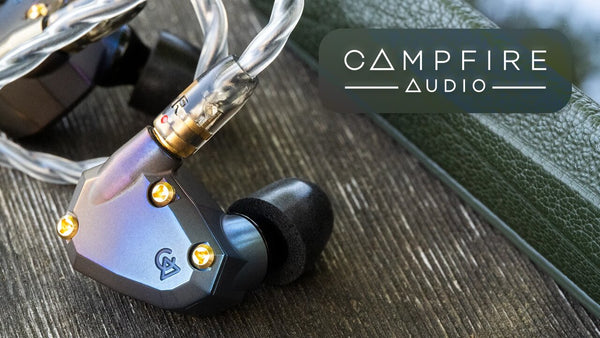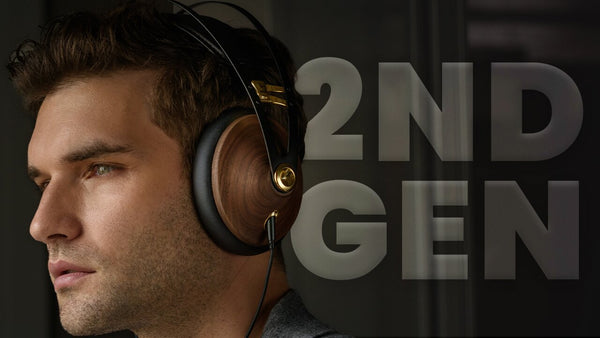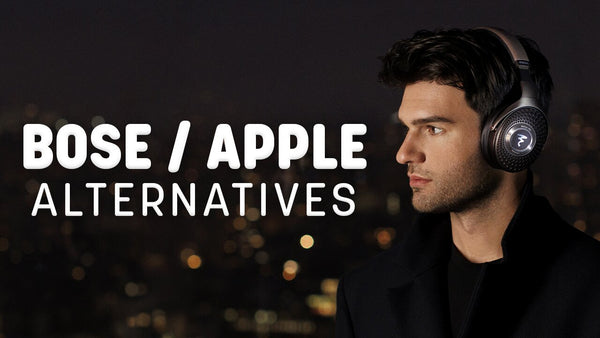Audiophile Headphones for Beginners
Read Time: Approx. 21 min.

Trade Your Consumer Headphones for Something Better
Remember when coffee was a cup of brown liquid at a diner, not a gourmet drink you buy in an experiential cafe? The diner coffee got the job done, but more enticing options came along. It's like that with headphones. Back in the day, headphones were cheap plastic things you could buy at the drugstore. They were convenient, a means to an end, but the sound quality was not stellar.
Over time, consumers were introduced to better options, with technology, audio quality, and comfort having evolved over the years. Maybe you listen to more premium consumer headphones like Bose or Beats, but you're thinking about the next step. The next step is audiophile headphones.
Audiophile headphones are designed for discerning listeners. More than just a means to listening to music, audiophile headphones are designed to provide a hi-fi experience—an experience with the highest fidelity, or accuracy, against an original recording. Generally speaking, audiophile headphones will maximize the amount of detail that you hear when using them while minimizing the amount of listening fatigue that can occur with lesser-quality headphones. Audiophile headphones also tend to feature more advanced technology and be made with more premium materials and better build quality than consumer-oriented headphones. If you're used to listening to consumer headphones, you may think they sound just fine. It's only after you try audiophile headphones that you realize what you've been missing.
Buying Audiophile Headphones: Everything You Need to Know
Do I Have to Spend a Lot for Audiophile Headphones?
You can spend thousands of dollars on a pair of high-end audiophile headphones, but there are many high-fidelity options with under-$1,000 and under-$500 price tags.
Think about wine. You can spend $200 for an amazing bottle, but you can also get a darn good bottle for $15. Is the $15 bottle going to be as good as the $200 bottle? Most people will say no, but that's honestly in the taste buds of the beholder. You might try both and decide you like the $15 bottle. When it comes to audiophile headphones, you're going to find more advanced technology and features the higher up the price ladder you go, but that doesn't mean that every more expensive audiophile headphone will be better than every less expensive one. The writer of this article, for example, considers an $899 headphone among her favorites. That means she likes the $899 headphone as much as some $3,000 and $4,000 headphones. Objectively, those $3,000 and $4,000 headphones may have more to offer, but again, taste is subjective.
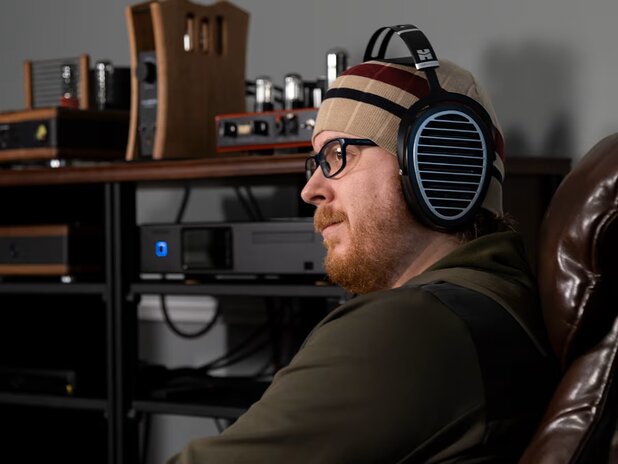
So the answer is you're going to spend at minimum a couple hundred dollars for audiophile headphones, but you don't have to spend thousands. Here, we present several great options below $999. This represents a good entry point for audiophile headphones. Then, after a while, you might decide to climb higher up the audiophile headphone ladder. Maybe you will eventually want a reference headphone. Reference headphones are usually the flagship of a particular brand, such as the Focal Utopia, which is Focal's flagship open-back headphone, or the Focal Stellia, which is Focal's flagship closed-back headphone. These are so-called "cream of the crop" headphones. Check out our Headphones 101 guide to learn about audiophile headphones at a range of price points.
Audiophile Headphones: Do They Sound Better?
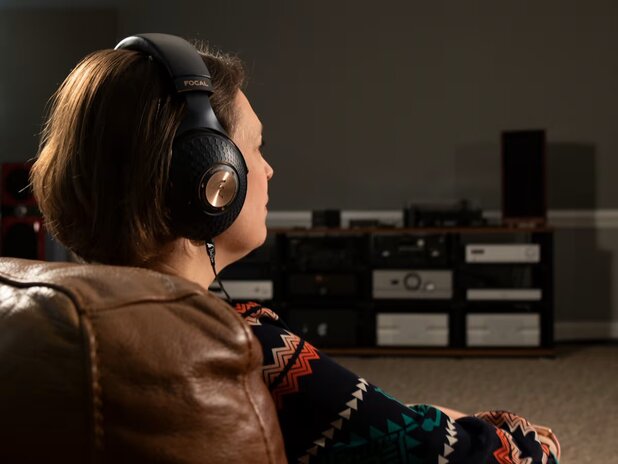
The short answer is yes, audiophile headphones generally sound better than consumer headphones. The more nuanced answer is that this depends in part on your listening style. You may ask, "Don't we all listen the same way?" Yes, we do, in that we put the headphones on our ears and turn up the volume. But we have varying expectations when we listen. Some of us just want to hear our music. Others won't be satisfied with just "hearing"; we want to hear our music sound as close to the original recording as possible. Some of us naturally (or through self-training) enjoy dissecting every aspect of a piece of music, and we want a headphone that will maximize instrument separation and clarity in a way that allows us to hone in on individual elements. If you are wanting more than just "hearing" your music, you will find audiophile headphones to be the right choice for you.
Factors to Consider when Choosing Audiophile Headphones
Clarity/Transparency: Does the headphone sound pristine, or is there some muddiness to the sound? Can you easily pick out and hone in on individual instruments? Does the bass "stay in its lane," so to speak, or does it sound like it spills into the low midrange?
Comfort: Long, leisurely listening sessions demand headphones that won't be a distraction on your head. Now, comfort is mostly subjective—what fits one person well might feel too "clampy" on another person. Headphone earcups (and earpieces on IEMs) vary in size and shape to accommodate a range of ear shapes and head sizes.
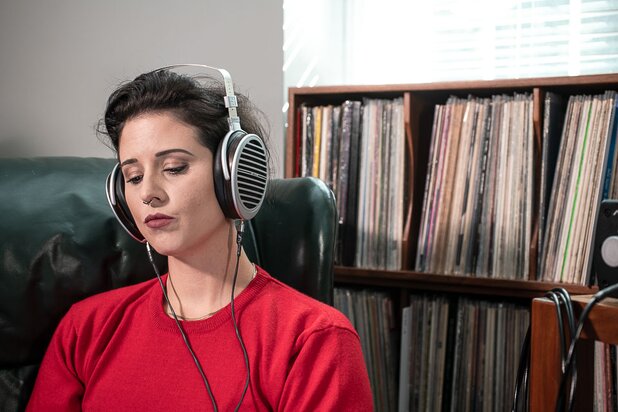
Drivability: In other words, how much power will your headphones require? You will see these two figures when you look at headphone specs: impedance and sensitivity. Generally, the lower the impedance and the higher the sensitivity, the easier your headphones will be to drive. You may even be able to drive them from your phone. However, we recommend using a DAC/headphone amp to get the maximum sound from your audiophile headphones.
Soundstage: This refers to the sense of space that you perceive when listening to your headphones. Does the sound feel compressed in your head, or is there a sense of depth, width, and airiness? When you close your eyes, can you easily envision the various instruments and vocalists spread out on a stage in your mind's eye? Generally speaking, open-back headphones (where the earcups are ventilated) will offer a wider soundstage than closed-back headphones, but there can be variation here as well as exceptions. One thing to note is that open-back headphones will have sound leakage, meaning that the people around you will be able to hear some of what you are listening to.
Sound signature: Think of this as the sound "flavor" of your headphones. Just like foods can be described as sweet, savory, sour, etc., headphones can be described according to various "signatures." Many audiophiles prefer a neutral or balanced sound signature, where no frequency is emphasized above any other. Other listeners may prefer some coloration to the sound; this is very much a personal preference. A warm sound signature, for example, will be cozy and smooth; in the extreme, the sound may be muffled or muddy. A bright signature happens when the treble is emphasized to a point where the sound is sharp; in the extreme, this will lead to listening fatigue. An analytical signature will have a lot of detail; in the extreme, it may be perceived as sterile.
Tuning: Tuning has to do with how audio frequencies are emphasized. This is related to sound signature, as the way a headphone is tuned will contribute to its sound. On a headphone with neutral tuning, no frequency will be emphasized. Other headphones are tuned for a boost in the bass, or the bass and treble, or the midrange.
Tips for Choosing Headphones with a High "Wife Acceptance Factor"
- Choose closed-back headphones
- Consider IEMs over full-size headphones
- Pay attention to aesthetics
- Consider portable components or a one-box solution

Features Like Noise Cancellation or Boosted Bass
Wireless noise cancelling headphones have been a boon for people who want to enjoy their music without outside distractions. Originally designed to reduce noise for airplane pilots in the cockpit area, noise cancelling headphones hit the mainstream after Dr. Amar Bose designed the first pair for consumers. The technology has come a long way, with noise canceling headphones now targeted toward consumers who both need and want to block outside sounds. From the airplane passenger who wants to get some shut-eye on a loud flight to the home office worker who needs to block household sounds to the frazzled apartment dweller who wants to enjoy music without hearing their neighbors arguing, noise canceling headphones have numerous consumer applications.
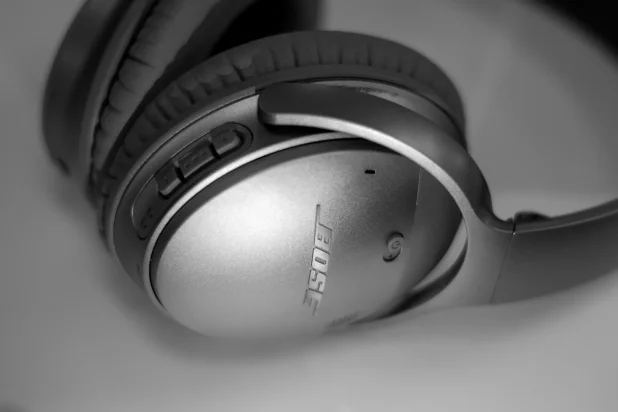
Bose headphones have a relatively balanced and neutral sound that makes them suited for a variety of genres. To this day, Bose headphones are synonymous with noise cancellation. Still, Bose headphones leave many listeners wanting more. Yours truly is actually listening to a pair of Bose headphones right now. They're absolutely decent, but my ears are used to higher-quality sound. Fortunately, manufacturers of audiophile headphones have come out with options to satisfy listeners who want the ease of wireless noise cancellation with better sound quality. Audeze, for example, has a couple of wireless noise cancelling gaming headphones (the Maxwell) that elevate the listening experience. They're gaming headphones because they have a microphone, but they can be used and enjoyed by non-gamers.

If you're a fan of big bass, you've probably heard of Beats headphones. Beats was founded in 2006 by rapper Dr. Dre and record executive Jimmy Iovine. Apple acquired the company in 2014. Beats makes wireless headphones and earphones. You may recognize Beats headphones by their bright colors and "blingy" designs. Beats have gained notoriety by being worn by many celebrities. Beats headphones have a "fun" sound with lots of bass, which makes them good for rap, hip-hop, pop, and similar genres. However, they aren't going to appease the listener who wants a more natural sound with lots of detail and articulation. The good news is that there are audiophile headphones with rich, robust bass that don't sacrifice detail and clarity in the process. Of course, big bass isn't everyone's cup of tea. But if it's yours, you don't have to settle for something with muddy bass or bass that overpowers other frequencies.
Best Audiophile Headphones Under $1,000
Meze Audio 99 Classics Headphones
Meze Audio makes premium products, and they do a great job of bringing that premium quality and sound to all price points. The 99 Classics provide a good amount of warmth and smoothness your music while also giving you detail and clarity. Bottom-end weight plus energy in the upper midrange makes them a great choice for rock 'n' roll and guitar-driven music. The price point is just right to make these a daily driver or pair of travel cans that will provide much more fidelity than your typical consumer-oriented headphones.
Meze Audio 109 Pro Headphones
At $799 the Meze Audio 109 Pro delivers an impressive quality at this price point. The craftsmanship of the 109 Pro, like all Meze headphones, is premium with a design that's similar to the 99 Classics. Meze is renowned for making some of the best headphones on the market and the 109 Pro is another meticulously crafted high-quality headphone by them. It's got a double headband frame with a self-adjusting headband and wooden ear cups. The ear pads have a soft felt finish and are thick to accommodate the large ear cup size of the 109 Pro.
The 109 Pro inherits Meze's amazingly wide soundstage and retains a lot of energy that creates a very organic sound. It uses specially-tuned dynamic drivers that deliver a lot of high-end clarity like the Elite and the warmer tone of the Empyrean at the same time. It has an immediate bass response — Tight, punchy, and not bloated whatsoever. Dynamic drivers deliver great bass and that combined with an open-back design gives you a very impactful and dynamic sound. The midrange is balanced and the high frequencies are crisp and clear. The 109 Pro is great for rock, blues, jazz, and alternative in particular.
We recommend pairing the 109 Pro with our Black Dragon Headphone Cable to smooth over any sibilance in the upper frequencies.
Focal Bathys Wireless Headphones
Next up, a treat for our wireless listeners is the Focal Bathys Wireless Headphones. Don't let the wire-free status of these cans fool you, they're nothing short of exceptional. At $699, they've got arguably the best sound quality in a wireless headphone under $1000. Equipped with Bluetooth 5.1 with AptX and AptX Adaptive codecs, over 30 hours of battery life, and effective active noise cancellation, it's pretty on par with our other offerings. What makes the Bathys stand out however is the USB-DAC mode which can offer up to 24-bit, 192 resolution thanks to the integrated DAC and amplifier.
It's also the sound quality that sets it apart. Great soundstage for a closed-back headphone, the bass response is tight and thumpy, and the mids and highs are clear and detailed. It's got that great Focal audiophile sound, just in a portable and wireless package with noise canceling. Understandably it leans toward a more audiophile-friendly sound, and it sounds great with Classical, Jazz, R&B, Folk, and more. Personally, I love it with Hip-Hop, Pop, and Electronica–but that's because I love the Bathys' bass response.
Excellent sound. Excellent Noise cancellation. It’s not hard to recommend these as our top pick for a pair of wireless headphones. For the Focal Bathys, we recommend pairing it with the Silver Dragon Portable Headphone Cable for enhancing detail and widening the soundstage. For USB DAC Mode, we recommend our Silver Dragon USB Cable for the ultimate performance in digital transmission from your music source.
Dan Clark AEON 2 Closed Portable Headphones
Priced at $899.99, the AEON 2 Closed-Back Headphones from Dan Clark Audio incorporate all the elements of a truly great audiophile headphone: Great sound, design, and form factor, plus excellent comfort. With any pair of high-end headphones portability matters and the AEON 2 delivers on its promise to be a portable option for listeners. It folds into a nice compact design that's perfect for travel, especially with the included hard case.
The AEON 2 will deliver you a sound that's on the warm side of neutral. You'll get a present midrange, relaxed treble, and a tight, punchy, and impactful bass. Experience your favorite vocalists singing right in front of you with a soundstage that is intimate, up close, and personal. It can handle a number of genres, from the energy in Rock and Alternative to the smoothness of Jazz and Classical.
Our Silver Dragon headphone cable is a great match for warm-leaning headphones like the AEON 2 Closed, as it will pull out some of the obscured middle and high frequencies while adding some top-end resolution.
Honorable Mentions: Audiophile IEMs under $1,000
Meze Audio ALBA Dynamic Driver IEMs
Meze Audio's newest IEM the Alba is perfect for everyday listening in any scenario. The Alba vividly emphasizes every aspect of your favorite songs with a neutral, warm-leaning sound signature. Built with daily listening in mind, the Alba is extremely comfortable with an ergonomic shape that nestles comfortably in your ear and provides excellent noise isolation. As a single dynamic driver IEM, the Alba is easy to use and can be driven by your smartphone using the 3.5mm to USB-C adapter cable. This specially-made adapter features a built-in DAC/Amp combo to ensure an immersive listening experience. The adapter also features an LED indicator that turns on when properly connected. Designed for those who dance to their own beat, for the curious and the free-spirited, the Alba IEM comprises a perfectly accessible and qualitative introduction into the world of elevated audio enjoyment.
Sennheiser IE600 Earphones
Meze Audio's newest IEM the Alba is perfect for everyday listening in any scenario. The Alba vividly emphasizes every aspect of your favorite songs with a neutral, warm-leaning sound signature. Built with daily listening in mind, the Alba is extremely comfortable with an ergonomic shape that nestles comfortably in your ear and provides excellent noise isolation. As a single dynamic driver IEM, the Alba is easy to use and can be driven by your smartphone using the 3.5mm to USB-C adapter cable. This specially-made adapter features a built-in DAC/Amp combo to ensure an immersive listening experience. The adapter also features an LED indicator that turns on when properly connected. Designed for those who dance to their own beat, for the curious and the free-spirited, the Alba IEM comprises a perfectly accessible and qualitative introduction into the world of elevated audio enjoyment.
Related Videos
How to Pick Your Perfect Pair of Headphones
Everything You Need to Know About Headphone Drivers
Top Audiophile Headphones of 2024: Entry to Endgame










